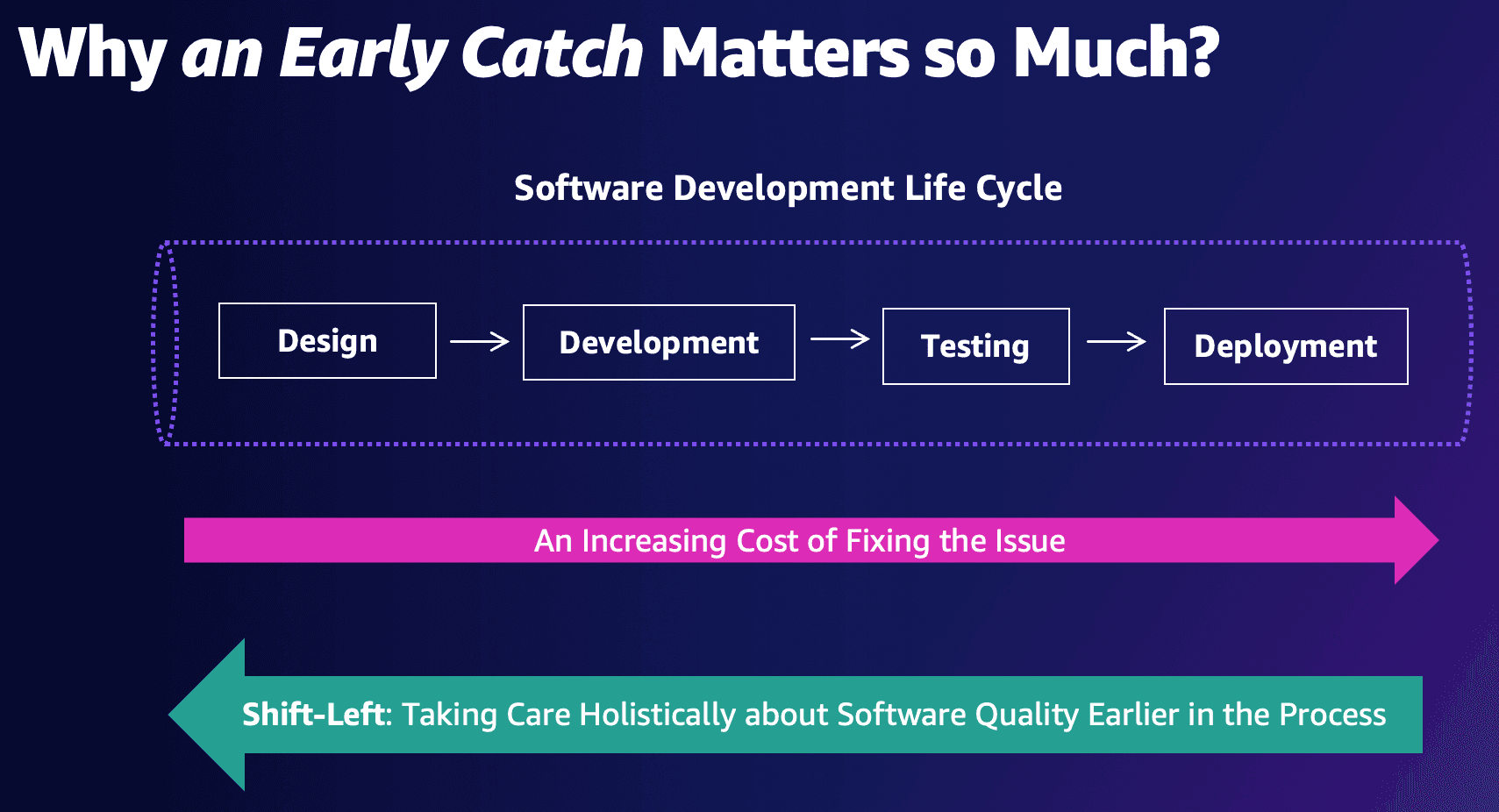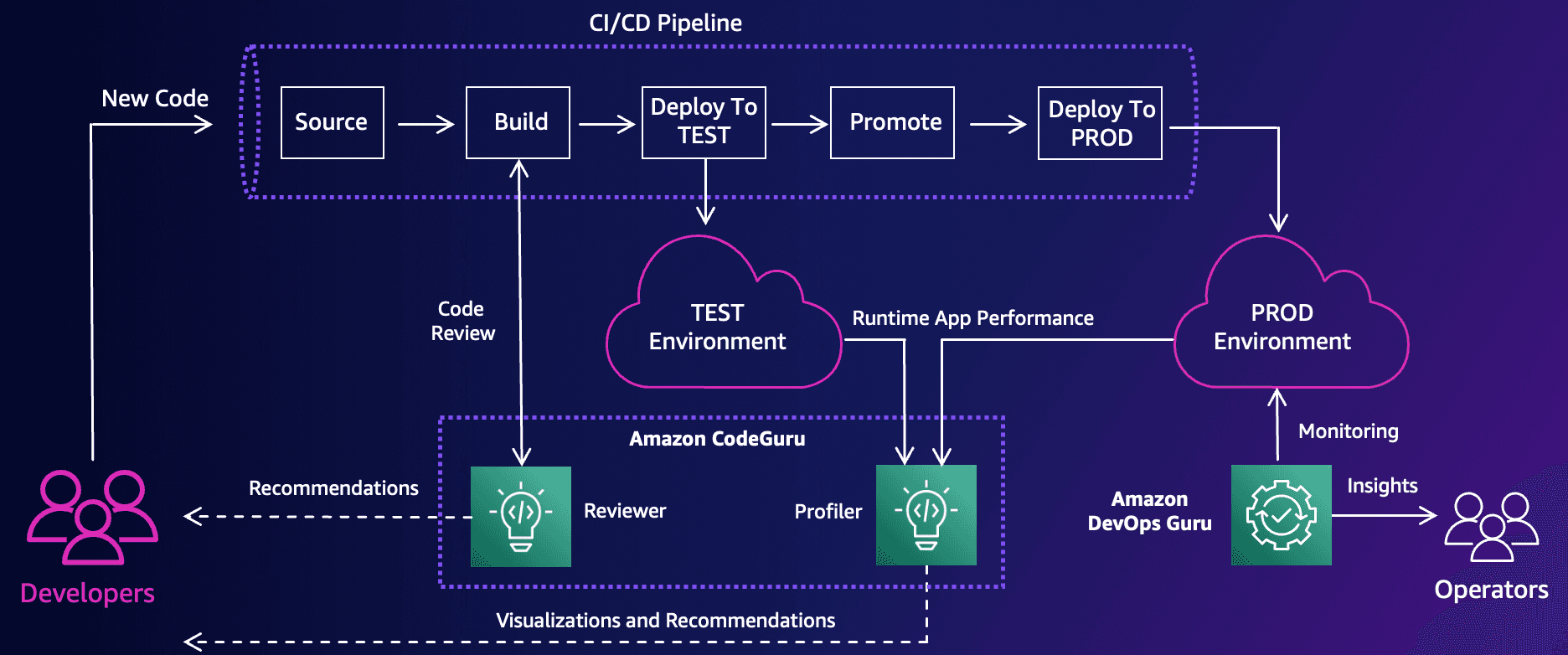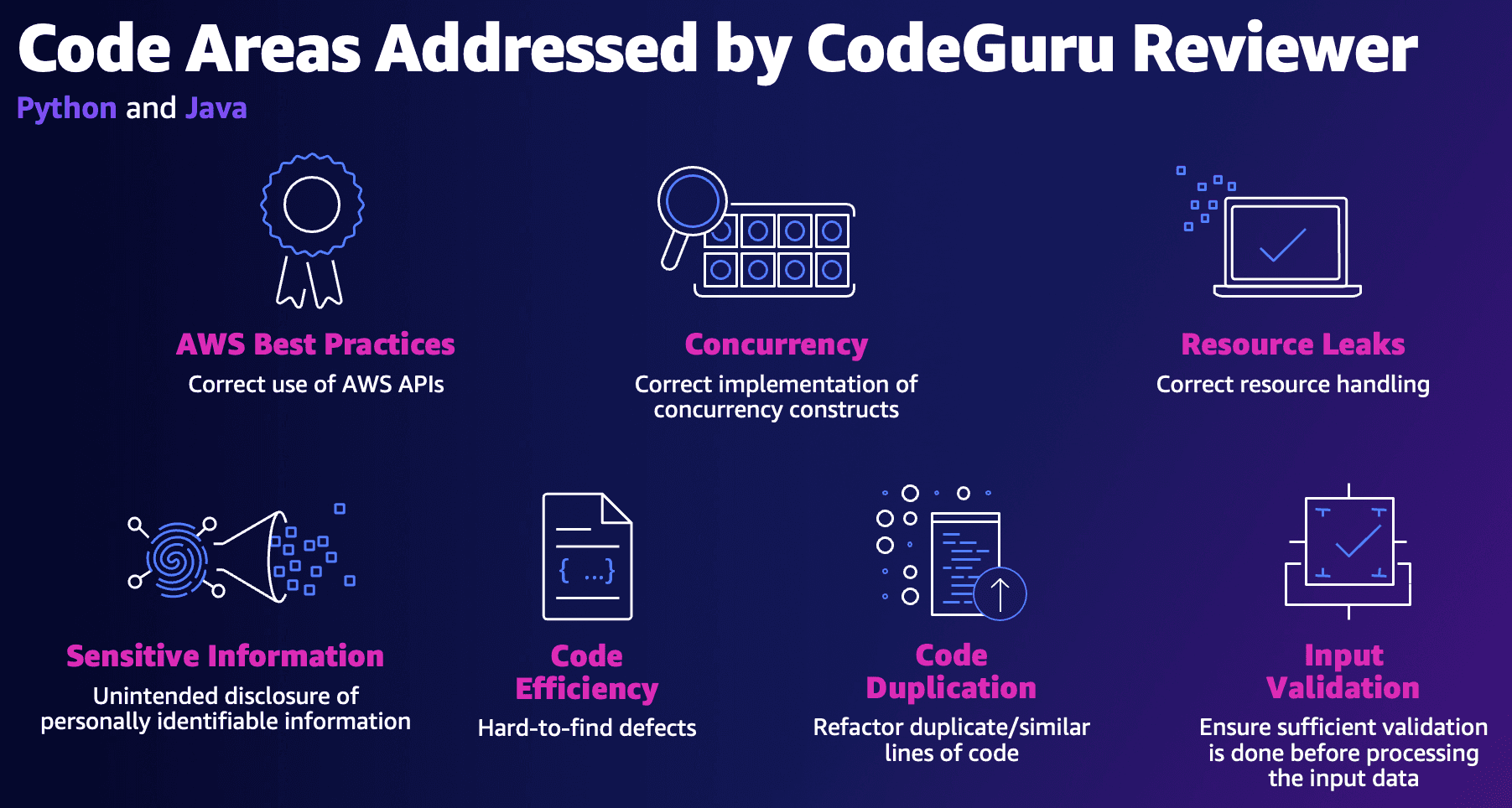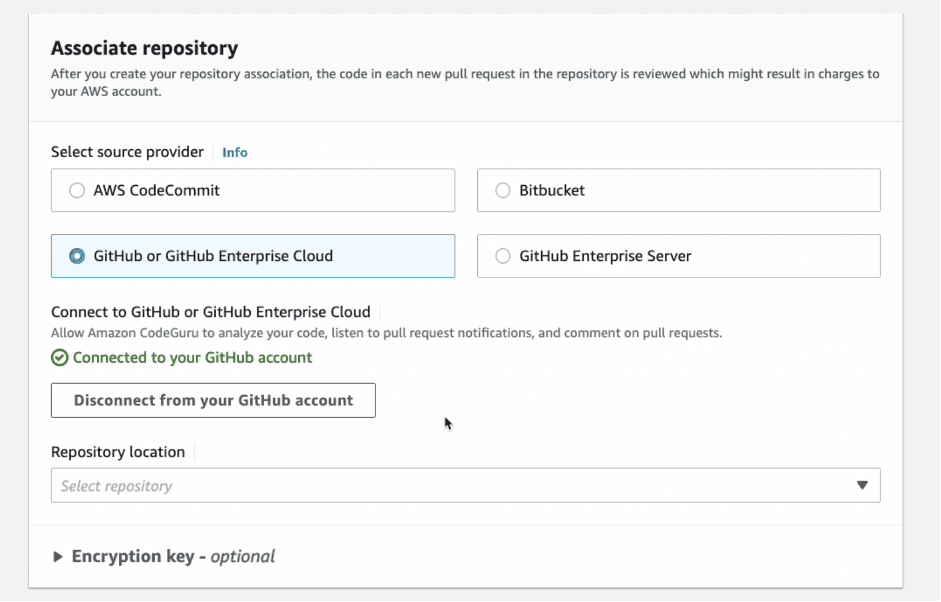Shift Left! A story on how to avoid security issues by using cloud services
Learn how to avoid security incidents by leveraging a fully managed cloud services portfolio in your CI/CD pipeline.
Wojtek Gawroński
Amazon Employee
Published Jan 10, 2023
Last Modified Mar 19, 2024
Starting on the 24th of November 2021, people that maintained JVM-based applications were terrified. Rumors that an exploit for a very popular logging library called Apache Log4j turned out to be true. Log4shell was so severe because it could be easily exploited (even by script kiddies) and allowed for remote code execution.
It was not the first time such an incident appeared in the news headlines, but recovering from that was pretty usual – many companies spent significant time patching or remediating the issue. Unfortunately, the library's popularity definitely did not help in this case, as not only regular back-end implementations were affected, but many other workloads – like databases, messaging servers, and other critical infrastructure components.
Besides the usual recovery time, our industry asked again: what can we do to protect ourselves from such an impact in the future?
We should start from a very simple fact: we cannot treat security as an afterthought when developing IT systems. This is why the impact is so severe in such a situation. In other words: we should tackle this topic as early as possible in the software development life cycle (SDLC).
One trend in our industry has gained popularity and tackled this challenge. It is called shift-left and refers to the transitioning of tough subjects tackled later in the software development process to the left-hand side – which means we deal with subject's complexity earlier.

Why is that so important? As shown in the image above, the earlier we catch potential issues in the development process, the cheaper and less problematic fix will eventually be. That is true for common defects and software quality but also for security incidents as well.
An immediate follow-up question is: is it possible to catch everything at the beginning? The answer is more complicated, but it boils down to how much investment we want to make and the risk level with which we’re comfortable. Of course, the more will we invest, the better the security state we achieve – but a question about cost-effectiveness remains open and varies case by case.
You may also ask: how do we know the most problematic threats? That’s a great question, and that’s why approaching such topics from a threat modeling perspective. It requires upfront investment (especially considering the time spent on the process) but gives the most significant return in the long run.
So, we know that we can move security topics earlier in the SDLC process, we have done threat modeling, and we have performed risk analysis that provided us answers about priorities. Does that mean we are safe and in better shape than previously?
More experienced and tenured people than me already told us that there are no silver bullets, and the security topic is no different. At least we can strive for the best, but relying on our willpower is naive, to put it mildly. We need something more reliable, and everything boils down to well-understood and consistently executed processes, including those applying automation and code review.
The more stuff we automate during the software development phase, the more we are confident that the outcome will be predictable. This is a crucial trait for long-term maintainability, but it enables us to do more things. There are available battle-tested best practices that can provide a nice gain right after we introduce them – and we have tools and processes that can do that reliably.
Speaking about more stuff we can do: we should leverage tools that will give us insights during the code review phase and point out obvious and non-obvious security issues discovered in our implementation.
A well-known technique helping with that is the SAST approach, which stands for Static Application Security Testing. It is a testing methodology that analyzes source code to find security vulnerabilities that make your applications susceptible to attack. This is also known as the white box testing technique and is often represented as a tool that can be used inside your SDLC process, e.g., in the CI/CD pipeline. This way, an automated solution will help you to detect problems at a much earlier stage.
As this approach seems relevant, you must be aware of one additional element: doing the right thing on a security path has to be intuitive and easy. Convenience is one of the elements that is often overlooked when enforcing security best practices. We can all agree that peopleware (aka humans) is always the weakest link in the chain when it comes to security, and that’s not without reason – we tend to work around complicated and cumbersome processes.
To address that, cloud providers often refer to the shared responsibility model, where the provider takes care of the security of the cloud and the customer takes care of security in the cloud. Providing such a model simplifies the scope, but at the same time, you need more precise recommendations on the implementation details.
AWS also helps with this by providing actionable advice in the form of the AWS Well-Architected Framework, in particular – with its Security pillar. As AWS, we have years of experience architecting solutions across a wide variety of business verticals and use cases, and from those experiences we have identified best practices and core strategies for architecting systems in the cloud collected in the document mentioned above. It’s a great way to stand on the shoulder of giants and learn from someone else’s learnings.
If you look into the SAST tooling landscape, you will see many choices, available as open-source or paid software. Speaking about choice, it is worth remembering that doing the right thing on the security path should be easy. However, adding an entirely new tool from an external provider can be challenging for organizations of any size. This is where listening to advice collected in the AWS Well-Architected Framework can actually pay off.

If your workloads are deployed on AWS, you can easily add a convenient and fully-managed tool from the SAST landscape called Amazon CodeGuru, which helps with reviewing code of applications written in Python and Java. Notice in the image above that CodeGuru sits in the pipeline in the building and testing phase - which is a direct implementation of the shift-left approach to security when it comes to the software development life cycle (SDLC) processes.

And as you can see on the image above, CodeGuru scans your code and provides insights about insecure usage of AWS API and SDKs. It proactively detects secrets and credentials hardcoded inside, common vulnerabilities (like mentioned at the beginning Log4shell, a Log4j log injection attack), and provides insights about the most popular OWASP security risks. I have not exhausted the list, but you can review the catalog of detected issues to learn more.
If you would like to investigate how to use CodeGuru in practice, I have prepared a code repository for you with an example.
The example contains integration with CI/CD pipeline represented in the form of GitHub Actions for two services written in Java and Python, where we can detect potential security and performance issues with the help of the service mentioned above.
To create this integration, we must establish a relationship between GitHub Actions and CodeGuru. The old-fashioned way would be easy: you can do this by creating AWS IAM User, narrowing down the IAM permissions, and creating Access Key to bridge those two worlds.
However, there is a much better way - meaning a more secure one. You can use OpenID Connect and IAM Roles, which will generate short-lived tokens with the help of AWS STS for a particular set of permissions IAM associated with that role.
We need two elements to use a better path – an IAM Role and a custom OIDC provider. They are created via AWS CDK definitions inside the file infrastructure/lib/infrastructure-shared-stack.ts:
After that, you can create a GitHub Actions workflow with the code snippet below. Let's have a look how to add an Amazon CodeGuru Reviewer action that will leverage the IAM role mentioned above (source: .github/workflows/codeguru-reviewer-java.yml):
You'll also need to configure the following secrets variables in your GitHub repository:
AWS_ROLE_FOR_CODEGURU_TO_ASSUME_ARNAWS_REGIONAWS_CODEGURU_REVIEWER_S3_BUCKET
You can do this by following these instructions to set up encrypted secrets for a repository.
Now, we can associate the desired repository by connecting it with our GitHub account inside the wizard – and schedule an initial scan:

After a few minutes, you will receive the results of the initial scan inside the CodeGuru Reviewer user interface:

Now, having a pipeline set up and properly configured, you can inspect in the same way each commit that lands on a particular branch, opened pull request (PR), or merge. For example, here are the results for a PR that I have opened in the past:

Not at all!
Having a fully-managed service added to your CI/CD pipeline, you can benefit from the constant growth and evolution done by the CodeGuru team on your behalf. Also, from the perspective of software development processes, AWS provides a lot more support with additional tools and techniques - and you can find all security-related recommendations inside the AWS Well-Architected Framework: Security Pillar.
I also encourage you to dive deeper into the provided code example to learn more such as how CodeGuru Reviewer tackles multiple languages in a single repository or how file exclusions and rules suppression works.
Any opinions in this post are those of the individual author and may not reflect the opinions of AWS.
